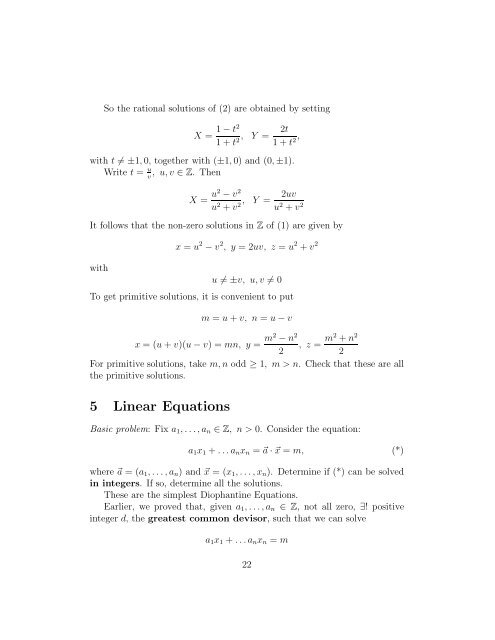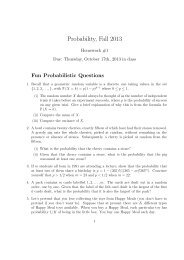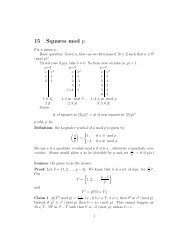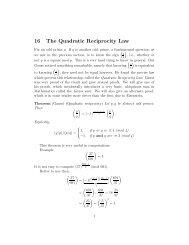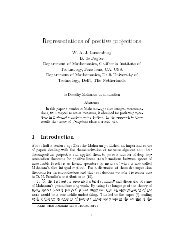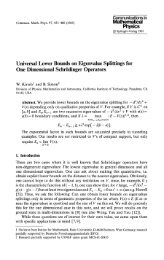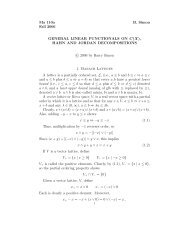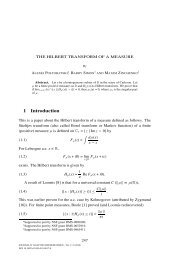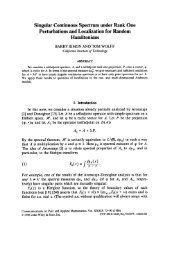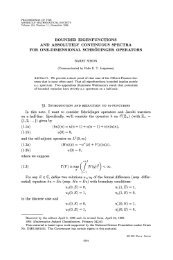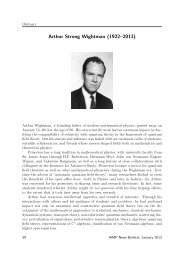1 Basic Notions - Caltech Mathematics Department
1 Basic Notions - Caltech Mathematics Department
1 Basic Notions - Caltech Mathematics Department
You also want an ePaper? Increase the reach of your titles
YUMPU automatically turns print PDFs into web optimized ePapers that Google loves.
So the rational solutions of (2) are obtained by setting<br />
X =<br />
1 − t2 2t<br />
, Y = ,<br />
1+t2 1+t2 with t = ±1, 0, together with (±1, 0) and (0, ±1).<br />
,u,v∈Z. Then<br />
Write t = u<br />
v<br />
X = u2 − v2 u2 2uv<br />
, Y =<br />
+ v2 u2 + v2 It follows that the non-zero solutions in Z of (1) are given by<br />
with<br />
x = u 2 − v 2 ,y=2uv, z = u 2 + v 2<br />
u = ±v, u,v = 0<br />
To get primitive solutions, it is convenient to put<br />
m = u + v, n = u − v<br />
x =(u + v)(u − v) =mn, y = m2 − n2 ,z=<br />
2<br />
m2 + n2 2<br />
For primitive solutions, take m, n odd ≥ 1, m>n. Check that these are all<br />
the primitive solutions.<br />
5 Linear Equations<br />
<strong>Basic</strong> problem: Fixa1,...,an ∈ Z, n>0. Consider the equation:<br />
a1x1 + ...anxn = a · x = m, (*)<br />
where a =(a1,...,an) andx =(x1,...,xn). Determine if (*) can be solved<br />
in integers. If so, determine all the solutions.<br />
These are the simplest Diophantine Equations.<br />
Earlier, we proved that, given a1,...,an ∈ Z, not all zero, ∃! positive<br />
integer d, thegreatest common devisor, such that we can solve<br />
a1x1 + ...anxn = m<br />
22


